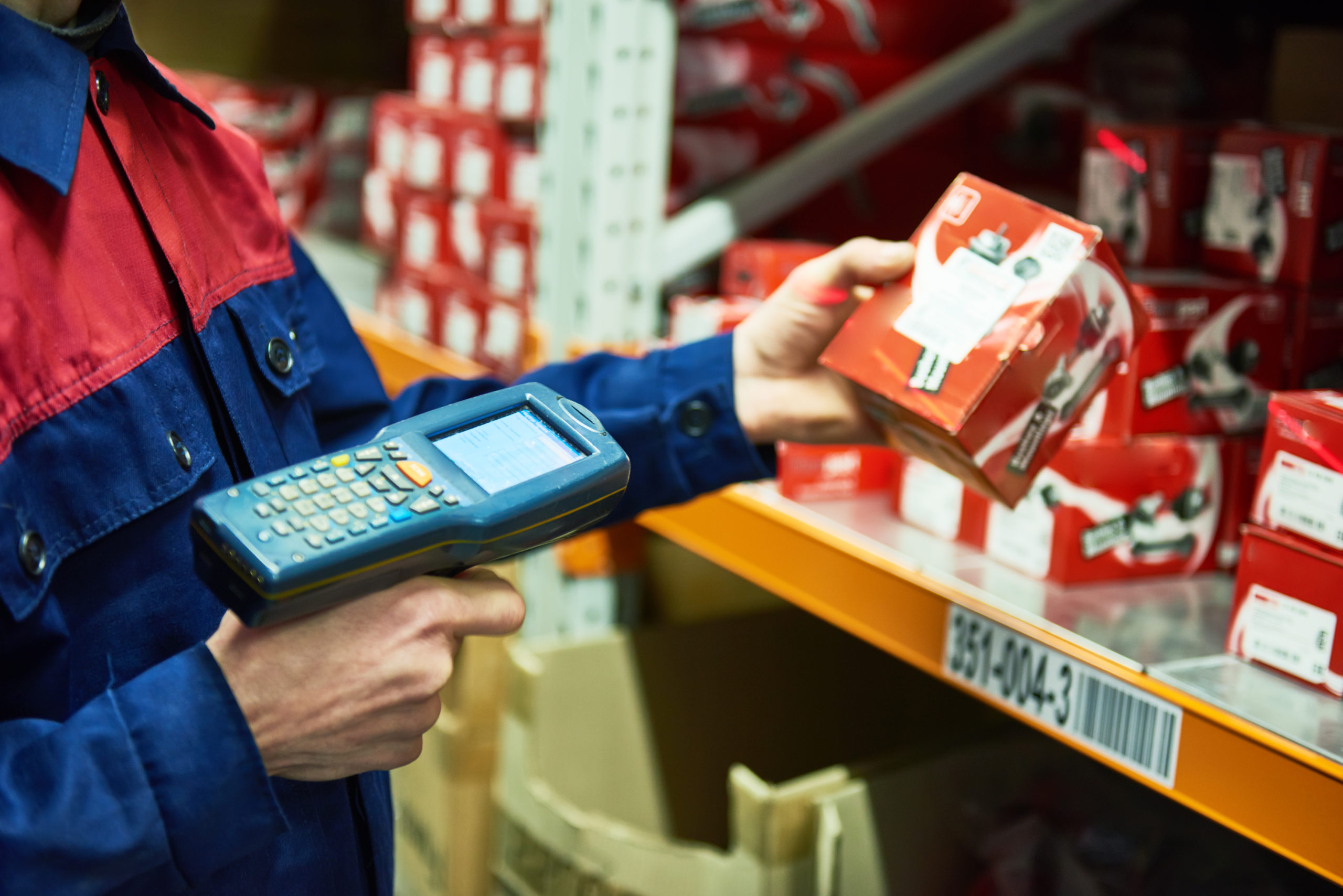Table of Contents
** Minutes
Why is selling on Instagram becoming so popular?
Drawbacks of selling on Instagram
How to get started selling on Instagram
Success stories of brands masterfully selling on Instagram
How ShipBob helps ecommerce companies with selling on Instagram
With its global market valued at $492 billion in 2021, social commerce has been exploding in popularity, and it’s expected to grow more than 2 times its current value to $1.2 trillion by 2025.
Social commerce is a subset of ecommerce that uses social networks in the context of ecommerce transactions.
The biggest influencer in the social commerce space? Instagram.
It’s reported that 83% of consumers say they use Instagram to discover new products or services.
Considering that Instagram has roughly 1 billion active monthly users, it is an ideal platform for brands looking to grow their social commerce strategy.
The stats speak for themselves — selling on Instagram is the way of the future for brands looking to drive brand awareness and maximise their online marketing efforts.
In this article, we go over how to start selling on Instagram Shopping.
What is Instagram Shopping?
To understand what Instagram Shopping is, we have to first understand what social commerce is and how it differs from traditional ecommerce.
Though the two may sound one and the same, the differences between social commerce and ecommerce are substantial.
Social commerce can be thought of as a perfect union of ecommerce and social media. Social commerce involves directly selling products and services on a social media platform.
The entire shopping experience, from the initial product discovery phase to the final checkout transaction, happens directly on the platform. This makes social media platforms like Instagram an ideal sales channel for online brands.
Instagram Shopping has streamlined the social commerce shopping experience by offering valuable features that simplify selling and purchasing goods.
Instagram Shopping has taken Instagram’s regular features and upgraded them. If you manage Instagram accounts, you probably know that Instagram Shopping has taken Instagram’s regular features and upgraded them. Features like image and video posts, Instagram Stories, and Instagram advertising are upgraded to improve the social shopping experience for consumers.
In addition, it allows brands to:
- Create designated online stores on the platform
- Create product pages
- Integrate product tags directly into Instagram ads
- Allow customers to check out directly on Instagram
Why is selling on Instagram becoming so popular?
A Conviva report found that US marketers spend over 30% of their total advertising budget on Instagram stories.
Instagram is a social media platform that heavily focuses on visual content, making it the ideal platform and sales channel for selling products and services.
Instagram’s popularity has been exponentially growing since 2012, when Facebook purchased the company for $1 billion.
Here are some statistics that showcase Instagram’s popularity:
- Roughly 30 million consumers shopped on Instagram in 2021.
- Instagram is one one of the most-visited website globally, with close to 3 billion visits per month.
- The Instagram app is the top most-downloaded application globally in terms of mobile applications.
- 18 to 34 year olds make up the majority of Instagram’s audience at 60%.
Instagram’s ever-growing popularity has had a massive influence on how consumers interact with the brands they love and purchase their products.
Instagram states that 1 in 2 people globally have used Instagram to discover new brands and products, with two out of three people saying that Instagram fosters an environment for meaningful interactions with brands. Therefore, it’s essential for brands to invest inInstagram growth services to be able to reach their target audience faster.
What does Instagram’s popularity mean for online brands?
Instagram also boasts a remarkable statistic stating that 44% of users use Instagram weekly to shop, and 90% of users follow a brand on the platform.
An Omnicore survey discovered that an astonishing 58% of Instagram users said they are more interested in brands after seeing them in an Instagram Story.
Another 50% said they’ve visited a brand’s website to purchase their products or services after seeing them in an Instagram Story.
Instagram’s influence on purchasing decisions
Instagram’s growing popularity has made it the most influential social media platform when it comes to influencing consumer purchasing decisions.
An X-Cart survey found that, of all the social media platforms, Instagram stands as the single platform with the most influence on shopping habits at 51%, with Facebook coming in 2nd place at 23%.
Additionally, 72% of Instagram users report that they make purchasing decisions based on what they see on the platform.
When you combine all of these statistics and put them into context, it’s clear why Instagram has become the leading social media platform for selling and purchasing products and services.
Drawbacks of selling on Instagram
With its wealth of features and benefits for brands and consumers alike, it’s hard to think there can be any drawbacks to selling on Instagram.
Unfortunately, this is not necessarily the case for brands that use the platform to sell their products and services. But there are ways to mitigate these drawbacks, which we’ll cover in more detail below.
Costly transaction fees
Instagram’s transaction fees consist of a selling fee of 5% per shipment or a flat fee of $0.40 for shipments of $8.00 or less.
For companies and brands that operate with a slim profit margin per transaction, a 5% selling fee can significantly impact profitability.
Lack of control over the purchase process
Despite Instagram Shopping having streamlined the entire shopping and checkout experience, which significantly reduces the purchase barriers for consumers, it comes with a particular drawback for brands.
Brands have limited access to customer data because a user’s payment and shipping information is stored directly on Instagram.
As a result, brands are only given access to the customer details necessary to fulfil their order, significantly less customer data than if the user were to purchase through the brand’s website. This lack of data prohibits brands from reengaging their existing customers via email newsletters.
Brands don’t have access to customer emails if they don’t opt-in for email marketing during checkout.
Also, lack of email and other essential customer info prohibits brands from establishing loyalty programs with their existing customers.
Difficulty fulfilling orders across multiple sales channels
Because a user’s entire shopping experience happens on Instagram with Instagram Shopping, it can add another headache-inducing drawback for brands: order fulfilment.
As multichannel marketing becomes increasingly more mainstream, where brands reach potential customers through multiple sales channels, multichannel inventory and fulfilment management through a single fulfilment dashboard becomes increasingly more necessary.
Because Instagram keeps all customer data on its platform, it is difficult for brands to fulfil orders through omnichannel fulfilment management efficiently.
Companies like ShipBob specialize in offering the most robust omnichannel fulfilment platform that solves the fulfilment issues caused by Instagram Shopping.
“While we initially used ShipBob exclusively for our retail fulfilment, we quickly outsourced DTC fulfilment to them as well once we experienced how easy and effective it was. ShipBob’s omnifulfillment solution could handle every sort of order we had, including retail, DTC, and B2B, and had no qualms whatsoever about facilitating our FBA prep orders for Amazon.
Multichannel fulfilment with ShipBob is affordable, too, as not having to do any shipping ourselves enables us to keep low overhead, and ShipBob’s transparent pricing across channels provides even more cost-savings.”
Nathan Garrison, Co-Founder and CEO of Sharkbanz
How to get started selling on Instagram
Getting started with selling on Instagram involves setting up a digital storefront for your brand, getting approved, and optimising your marketing strategy on Instagram to maximise returns.
It can all be accomplished in a few steps.
1. Set up Instagram Shopping
You’ll first need to create an Instagram Business profile or ‘Creator’ account on Instagram to get started.
To make the Instagram digital store, you’ll need connect your business Facebook page to their Instagram Business account.
The next step involves uploading a brand’s product catalogue through either the Facebook ‘Business Catalogue Manager’ or by integrating an ecommerce database such as Shopify, BigCommerce, and other ecommerce platforms.
After completing this step, the brand’s Instagram account is reviewed. Once approved, they can turn on the Instagram Shopping feature and start selling on Instagram.
2. Stay on brand when selling on Instagram
Once approved to sell on Instagram, you’ll want to explore all the Instagram Shopping features at your disposal and create brand-focused:
- Shopping Posts
- Shopping Stories
- Shopping Ads
- Live Shopping Stream
- Shopping Guides
Depending on your brand’s strategy and industry, some of Instagram Shopping’s features may work better than others.
Regardless of the Instagram Shopping feature a brand chooses to focus on, be sure to use high-quality and eye-catching visuals.
Instagram is a highly visual social platform. Therefore brands need to use captivating imagery and product shots to make their products look professional yet appealing.
Remember to incorporate branding guidelines that stay true to your brand when crafting visuals. But, at the same time, the visuals must stand out from the crowd on Instagram to catch consumers’ attention.
3. Strategic planning
Next, you’ll need to take the time to plan posts and other Instagram Shopping features strategically. Posts should be sales-oriented and focused on converting consumers, for the most part. Still, they also need to be focused on creating value for the consumer.
A great way to do this is through video content that shows your product or service in action and how it addresses and solves your target audience’s pain points. It’s also crucial to consider the timing of your posts; understanding the best time to post on Instagram can significantly impact visibility and engagement.
User-generated content (UGC) is another excellent strategy for Instagram Shopping because social shoppers place more trust in brands that they perceive as credible, and there’s nothing more authentic and credible than real users giving their honest visual testimonials.
4. Connect to your inventory and fulfilment management software
Retail fulfilment of Instagram Shopping orders is done through the Commerce Manager. Here is where brands fulfil orders, ship orders, mark items as shipped, and resolve customer issues.
There is an option in the ‘Commerce Manager’ to connect your inventory and fulfilment management partners and software so that fulfilment is done through them instead of the Commerce Manager.
Brands can streamline fulfilment across multiple sales channels by partnering with ShipBob for their omnichannel fulfilment needs, including Instagram Shopping.
In addition, brands can track inventory in real-time from a single dashboard with ShipBob, while saving time and money by having fulfilment experts handle their logistics.
5. Test Instagram shopping campaigns
Because Instagram is so visually oriented, brands must test different imagery and product shots to see which ones best resonate with their audience. A/B testing is a great way to do this.
Brands can set up identical campaigns that test out varying image and caption combinations to see which visual and content creates the best engagement and most conversions.
Success stories of brands masterfully selling on Instagram
There are success stories of businesses of all sizes selling and scaling their brands through Instagram selling.
But, only a few can match the exciting growth and potential that direct-to-consumer (DTC) brands have seen on Instagram.
More and more of today’s consumers are deserting traditional retail and transitioning their loyalty to DTC brands, especially in the health, beauty, and wellness industries.
Glossier
Glossier is an excellent example of a DTC brand that has taken Instagram by storm. Glossier was founded by Emily Weiss, a former styling assistant for Vogue, and is an ecommerce company that sells a limited range of skincare products for women.
From its inception to its product launch, Glossier has primarily focused on garnering the power of Instagram as opposed to traditional marketing outlets and channels, online and offline.
It has formed a cult following of sorts on Instagram because the company does a fantastic job at reaching and engaging with online consumers on Instagram.
Glossier does this by implementing its unique tone of voice in its imagery, copy, and posts on Instagram. Glossier’s tone relates to its audience because it is casual and cool.
In addition, Glossier directly engages with its customers on Instagram, offers great customer service, and encourages user-generated content.
Touchland
Touchland, a ShipBob customer, is another excellent example of a DTC brand that has masterfully harnessed the power of Instagram. It transformed the hand sanitizer industry by making it a beauty product.
Similar to Glossier, Touchland’s strategy was very Instagram-focused. Their ultra-sleek and visually captivating product designs are made for Instagram.
Their organic Instagram marketing and Instagram influencer marketing strategy have catapulted the brand to be front and centre on Instagram as the leading hand sanitizer beauty product, with their videos going viral on Instagram and TikTok alike.
Touchland is just one of several online brands that partner with ShipBob to take care of orders from multiple channels, including Instagram.
With more omnichannel solutions for online brands available than ever before, there’s never been a better time to sell on Instagram and other social commerce channels.
How ShipBob helps ecommerce companies with selling on Instagram
Lean on some of the cons from the drawbacks section. The goal of the section is to position ShipBob as the 3PL provider that can manage order fulfilment & inventory management for companies doing Instagram sales at scale.
Selling on Instagram FAQs
Here are answers to the top questions about selling on Instagram.
How do you sell on Instagram?
You can sell products on Instagram by setting your company and brand up with Instagram Shopping. Once your Business account is created and approved, you can have your digital store up and running in minutes.
You can use Instagram posts such as Shoppable Posts and product stickers in Instagram Stories to sell your products. Make sure to use visually captivating product imagery and copy.
Do I need a website to sell on Instagram?
Nope. Once your Business Account is created, you can proceed to create a digital store directly on Instagram. Your store can showcase your products and allow customers to purchase directly on Instagram without a website.
Does it cost money to sell on Instagram?
Selling on Instagram does not require a budget unless you want to run ads. Instagram takes a 5% selling fee or $0.40 flat fee for shipping orders of $8.00 or less with each sale.
Does ShipBob fulfil Instagram Shopping orders?
Yes! ShipBob is an omnichannel fulfilment solution that can help you fulfil Instagram Shopping orders, plus other social commerce channels like Facebook.



